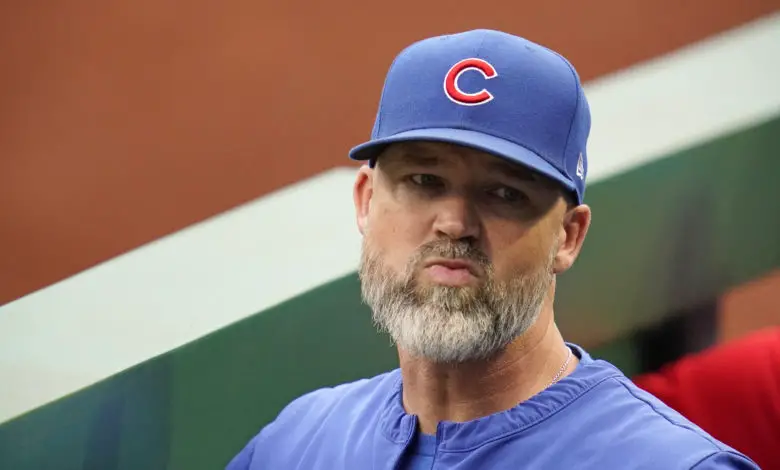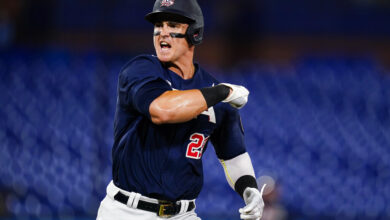
Cubs’ RISP Futility Almost Too Outlandish to Believe
What if I told the Cubs aren’t that far away from being a decent team this year? The logic I’ll present requires that you participate in the same sort of suspension of disbelief required to enjoy time-travel movies, but if you relax your brain enough you might see where I’m going here. The whole notion rests on the incredibly outlandish fact that the Cubs have had the second-most plate appearances with RISP in all of Major League Baseball this season.
After the Red Sox at 841 PAs, the Cubs have 803 to sit comfortably ahead of the Padres (784) and Dodgers (773) to lead the NL. Thirteen teams don’t even have 700 such PAs yet and three aren’t even at 600, so it’s quite obvious the Cubs are doing a better job than just about anyone when it comes to putting runners in scoring position.
As you probably already know, however, there is a big catch.
The Cubs’ .225 batting average with RISP is 28th in MLB, their 90 wRC+ and .300 wOBA rank 25th, and their 14 homers are 26th. The Yankees, who have an even 700 plate appearances with runners on second and/or third, have a .237 average with 32 homers. That latter number alone represents at least 36 more runs, which might have helped the Cubs in some of their 15 one-run losses.
Here’s how the Cubs rank in average, wOBA, and wRC+ across different situations:
Bases empty: .244 (7), .317 (6), 102 (8)
Overall stats: .245 (12), .314 (14), 100 (16)
Men on base: .247 (20), .311 (22), 98 (23)
Stats w/RISP: .225 (28), .300 (25), 90 (25)
If the game was predicated solely on reaching base and not actually scoring, the Cubs would be a top-10 team in baseball this season. That’s the really wild part when you get down to it because you’d think a team that can put runners on and move them over, something the Cubs have done much better than most, would reap the benefits of that strategy over time. Hell, dumb luck alone should have seen them pushing more runs across.
But the problem is that an extraordinary amount of poor fortune has impacted their results so far this season. In addition to all the injuries and perhaps a wee bit of roster mismanagement, the Cubs can’t seem to catch a break on batted balls. While their overall .301 BABIP is tied for fourth in MLB, their .278 BABIP with RISP is 24th. Over 670 at-bats, that comes out to around 15 fewer hits.
It’s more than fair to say those hits would have resulted in at least as many runs on their own, not to mention the potential for extending innings. And unlike the comparison above to the Yankees’ gaudy home run total, we’re just talking about a single here or there. Which brings me to a player whose acquisition was supposed to have given the Cubs precisely that kind of hitter.
Nick Madrigal has been beset by injuries and may yet be able to find a groove, but his utter lack of pop has changed the way defenses play him. That means far less room for balls to fall, hence the unsightly 0-for-23 line with runners in scoring position this season. He has managed to drive in a pair of runs, but his -92 wRC+ says he’s been 92% worse than the average hitter in those situations.
The point isn’t so much to pick on Madrigal as it is to highlight another weird wrinkle in the team’s wacky overall performance. It’s really easy to look at the record or watch some of the games and say the Cubs suck, but you can really start twisting your mind into a pretzel when you dig into stats like these and start to think about how even some very small changes could yield big results.
Let’s just say, for instance, that the Cubs had added a shortstop with a big bat and moved Hoerner over to second. Or maybe they went out and found a left-handed slugger who could boost those power numbers against righty pitchers. I was going to mention Carlos Correa by name for that first part, but he’s been pretty meh with RISP and doesn’t present a great example.
Still, it’d be better than what we’ve seen. I’m not willing to make the leap to say the Cubs are actually a decent team masquerading as a bottom-feeder or that they can turn it around quickly with a couple key acquisitions, but the gulf between their current position and one of competitiveness isn’t as wide as it seems. That’s not some Pollyanna take, it’s just what the numbers tell us.
Of course, we also need to consider that these numbers include some potential All-Stars who might not be around for the second half and beyond.

